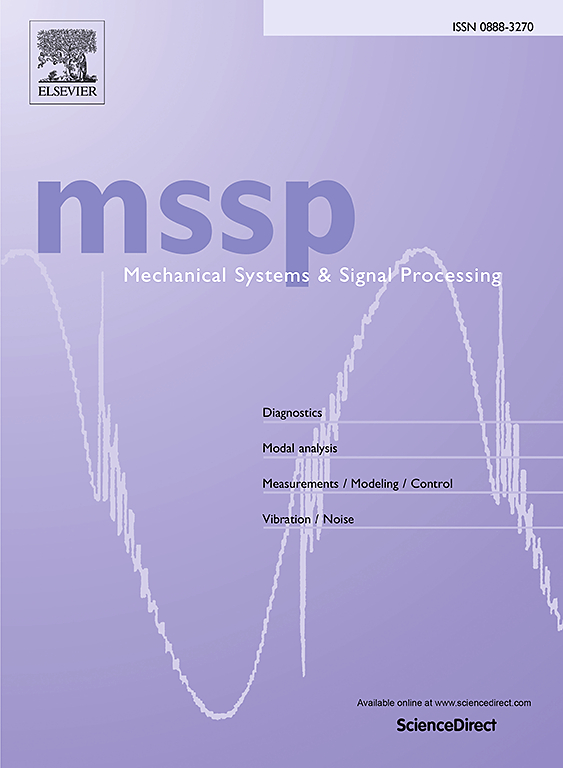A corrected circular graph-driven fault diagnosis method for tidal stream turbine blades
IF 7.9
1区 工程技术
Q1 ENGINEERING, MECHANICAL
引用次数: 0
Abstract
Tidal stream turbine (TST) blades are susceptible to failure due to biofouling, accurate blade faults diagnosis is of great significance. However, the insignificance of multi-blade fault features reduce diagnosis accuracy, and the random swell effects further increase the fluctuations of multi-blade fault features. Therefore, a corrected circular graph-driven fault diagnosis (CCGFD) method is proposed to improve the multi-blade faults diagnosis accuracy under the swell effects. In this approach, a corrected circular graph construction (CCG) method is proposed to capture the multi-blade faults features, and the radius circular graph interactive network (RGN) is proposed for multi-blade faults classification. Specifically, the CCG method converts one-dimensional stator current signals into two-dimensional corrected circular graphs, and the correction of vector trajectory improves the discriminability of the blade fault features under the swell effects. Furthermore, the RGN method enriches the multi-blade fault features by fusing one-dimensional circular radius and two-dimensional corrected circular graph, which contains fine-grained fault features in both the time and angular domains. Finally, several experiments on a 230 W TST prototype verified the effectiveness and the robustness of the proposed method.
一种校正圆图驱动的潮汐水轮机叶片故障诊断方法
潮汐能水轮机(TST)叶片易因生物污染而发生故障,准确的叶片故障诊断具有重要意义。然而,多叶片故障特征的不显著性降低了诊断的准确性,随机膨胀效应进一步增加了多叶片故障特征的波动。为此,提出了一种修正的圆图驱动故障诊断方法,以提高膨胀效应下的多叶片故障诊断精度。该方法提出了一种校正圆图构建(CCG)方法来捕获多叶片故障特征,并提出了半径圆图交互网络(RGN)用于多叶片故障分类。具体而言,CCG方法将一维定子电流信号转换为二维修正后的圆图,矢量轨迹的修正提高了膨胀效应下叶片故障特征的可分辨性。此外,RGN方法通过融合一维圆半径和二维修正圆图,丰富了多叶片故障特征,在时间域和角度域都包含了细粒度的故障特征。最后,在一台230 W的TST样机上进行了实验,验证了该方法的有效性和鲁棒性。
本文章由计算机程序翻译,如有差异,请以英文原文为准。
求助全文
约1分钟内获得全文
求助全文
来源期刊

Mechanical Systems and Signal Processing
工程技术-工程:机械
CiteScore
14.80
自引率
13.10%
发文量
1183
审稿时长
5.4 months
期刊介绍:
Journal Name: Mechanical Systems and Signal Processing (MSSP)
Interdisciplinary Focus:
Mechanical, Aerospace, and Civil Engineering
Purpose:Reporting scientific advancements of the highest quality
Arising from new techniques in sensing, instrumentation, signal processing, modelling, and control of dynamic systems
 求助内容:
求助内容: 应助结果提醒方式:
应助结果提醒方式:


